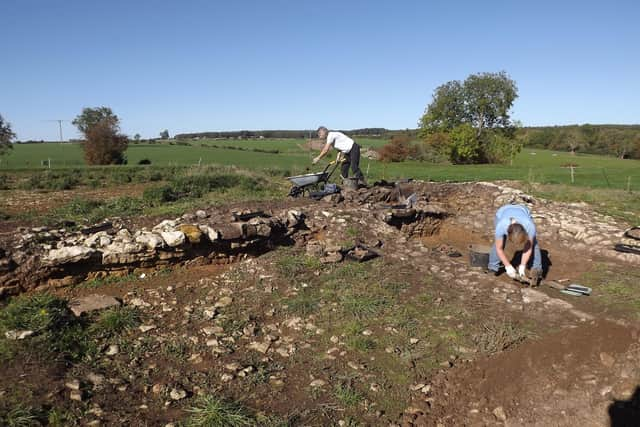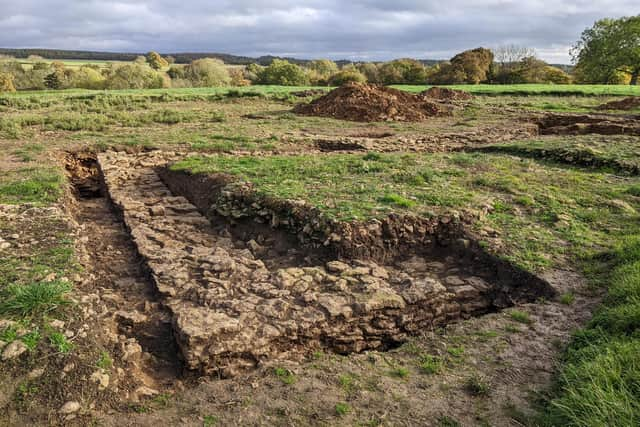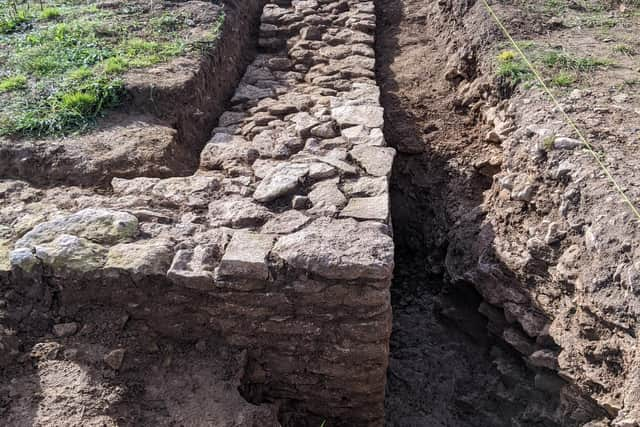Archaeologists make 'almost unheard of' discoveries at site of Yorkshire medieval farm with links to Rievaulx Abbey
The site, four miles from Helmsley, was known to be the location of a grange built shortly after the abbey was founded in 1132 to supply it with produce, yet this was the first major excavation.
The farm was managed by the Cistercian monks until the Dissolution of the Monasteries in 1539, and items including rosary beads, pottery and glazed tiles were all found.
Advertisement
Hide AdAdvertisement
Hide AdIt is now thought the grange was of high economic importance and reflected the status of the abbey itself. The glazed roof tiles are ‘almost unheard of’ in farms of the period, and evidence iron smelting took place on the land was also discovered.


The National Park Authority’s head of historic environment Miles Johnson said:
“Whilst it’s not surprising that we found evidence of medieval farming, the prestige and range of the uncovered artefacts points to this being a place of high economic importance.
“For the archaeologists to find a cellar and what we think are glazed roof tiles from a medieval farm of this period is almost unheard of. Some finds also relate to the process of iron smelting, which was clearly happening onsite and indeed there was also an iron hunting arrow.”
Advertisement
Hide AdAdvertisement
Hide AdThe community dig was led by archaeologist John Buglass, founder of North Yorkshire-based JB Archeology, with close involvement from Keith Emerick, Inspector of Ancient Monuments at Historic England. Sixteen volunteers took part, contributing the equivalent of 129 days across six weeks.


John Buglass said: “This is one of those unexpected digs that shows just how much we can still learn from sites we thought we understood.
“Through the hard work of volunteer archaeologists from inside and outside the National Park, we have managed to add some significant understanding to our knowledge of the monastic granges of Rievaulx.”
Keith Emerick of Historic England added: “This is a truly remarkable discovery. Although we know where many monastic farm sites are located, relatively little is known about them. The excavation of such impressive remains and their associated finds adds a huge amount to our understanding of the medieval world.”
Advertisement
Hide AdAdvertisement
Hide AdThe excavations, which covered only a small part of the site, have now been completed, but work on analysing the finds and interpreting the materials recovered will continue over the next year.


As successful farmers, the Cistercian monks at Rievaulx Abbey had a significant impact on the landscape of the North York Moors. They developed large scale moorland grazing and stimulated the rapid growth of the wool trade that became so significant in England’s later history. The monks even diverted the course of the River Rye on more than one occasion to allow for their developments.
The lead mining, iron ore and wool sales operations were all highly profitable until the Black Death, after which it became difficult to recruit labour.
Rievaulx Abbey fell into ruin after the monks left following King Henry VIII’s campaign against the power of the Catholic Church. The site is now owned by English Heritage and welcomes visitors.
